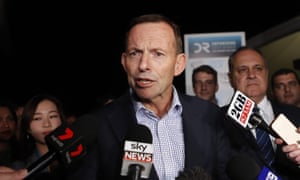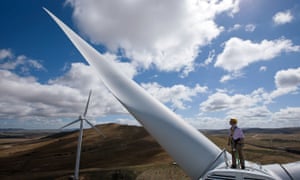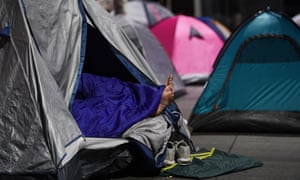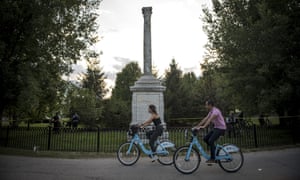Tony Abbott has thrown down the gauntlet to Malcolm Turnbull
in the lead-up to the Coalition’s renewed deliberations over the Finkel
review, declaring if the prime minister is prepared to back pumped
hydro, he also needs to support a new coal-fired power station.
The former prime minister used his regular spot on 2GB on Wednesday to argue the government needed to walk the walk on technology neutrality, and also use its looming response to the Finkel review to create a regulatory environment where coal-fired power generation was not subject to “political risk”.
While endorsing a suggestion from Turnbull on Wednesday that he would welcome a next-generation coal-fired power station, Abbott also singled out Turnbull’s pet project, the Snowy 2.0 pumped hydro scheme, as an explicit point of comparison.
“If we are prepared to go ahead with pumped hydro, and we are neutral on technology, we should certainly be prepared to go ahead with a new coal-fired power station,” Abbott said.
Abbott’s intervention comes as the government is due to receive a report it has commissioned from the Australian Energy Market Operator about the dispatchable power requirements of the electricity grid after the closure of two ageing coal-fired power stations.
The government hit pause on the contested internal deliberations
about the central recommendation of the Finkel review – a new clean
energy target – while it sought advice from Aemo about Australia’s
base-load power requirements during the upcoming period of transition.
That advice is due late this week.
The government has been coy about when it will determine its final position on the clean energy target – a position that would need to be considered not only by the cabinet, but by the Coalition party room, which will bring vocal critics, like Abbott, back into play.
Turnbull on Wednesday suggested the government would proceed with its decision on the clean energy target “shortly”.
Abbott has been pushing coal’s case internally throughout the entire internal debate over the Finkel review, and the Nationals have also made support for coal a price of their support for the clean energy target.
The Nationals have been pursuing new builds, possibly funded by the Northern Australia Infrastructure Facility, or the retrofitting of existing plants.
While the Turnbull government could look to prolong the life of the plants due to exit the system – including the Liddell plant, which is due to close in 2022 – recent meetings with energy retailers have featured senior executives giving a clear message to the government that they are not interested in prolonging the life of their coal assets.
The prime minister said on Wednesday the work the government was doing with Aemo was centred on “what can be done to maintain base-load generation in Australia by ensuring some of the power stations are able to continue for longer, rather than having, you know, sudden closures, like with Hazlewood, which had costly consequences for the electricity market”.
He noted the cheapest form of coal fired energy “is that which comes from existing power stations”.
Turnbull on Wednesday said there was no proposal before the government to build a new “clean” coal power station, but “if there was a proposal to build a new coal-fired power station, then there are various, you know, avenues”.
He said a proposal for north Queensland “could well qualify for the Northern Australia Infrastructure Fund”.
The former prime minister used his regular spot on 2GB on Wednesday to argue the government needed to walk the walk on technology neutrality, and also use its looming response to the Finkel review to create a regulatory environment where coal-fired power generation was not subject to “political risk”.
While endorsing a suggestion from Turnbull on Wednesday that he would welcome a next-generation coal-fired power station, Abbott also singled out Turnbull’s pet project, the Snowy 2.0 pumped hydro scheme, as an explicit point of comparison.
“If we are prepared to go ahead with pumped hydro, and we are neutral on technology, we should certainly be prepared to go ahead with a new coal-fired power station,” Abbott said.
Abbott’s intervention comes as the government is due to receive a report it has commissioned from the Australian Energy Market Operator about the dispatchable power requirements of the electricity grid after the closure of two ageing coal-fired power stations.
That advice is due late this week.
The government has been coy about when it will determine its final position on the clean energy target – a position that would need to be considered not only by the cabinet, but by the Coalition party room, which will bring vocal critics, like Abbott, back into play.
Turnbull on Wednesday suggested the government would proceed with its decision on the clean energy target “shortly”.
Abbott has been pushing coal’s case internally throughout the entire internal debate over the Finkel review, and the Nationals have also made support for coal a price of their support for the clean energy target.
The Nationals have been pursuing new builds, possibly funded by the Northern Australia Infrastructure Facility, or the retrofitting of existing plants.
While the Turnbull government could look to prolong the life of the plants due to exit the system – including the Liddell plant, which is due to close in 2022 – recent meetings with energy retailers have featured senior executives giving a clear message to the government that they are not interested in prolonging the life of their coal assets.
The prime minister said on Wednesday the work the government was doing with Aemo was centred on “what can be done to maintain base-load generation in Australia by ensuring some of the power stations are able to continue for longer, rather than having, you know, sudden closures, like with Hazlewood, which had costly consequences for the electricity market”.
He noted the cheapest form of coal fired energy “is that which comes from existing power stations”.
Turnbull on Wednesday said there was no proposal before the government to build a new “clean” coal power station, but “if there was a proposal to build a new coal-fired power station, then there are various, you know, avenues”.
He said a proposal for north Queensland “could well qualify for the Northern Australia Infrastructure Fund”.





